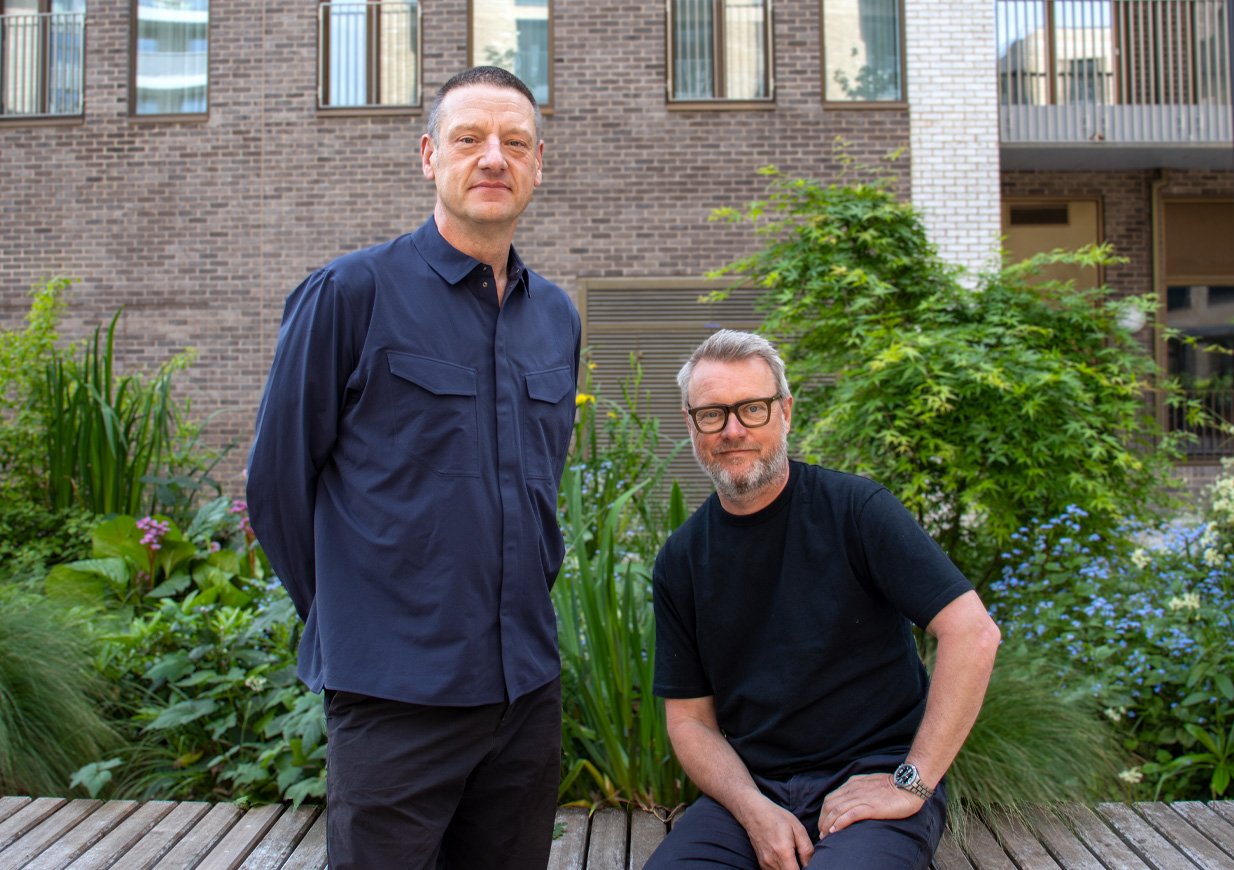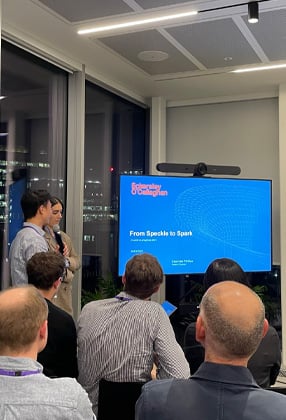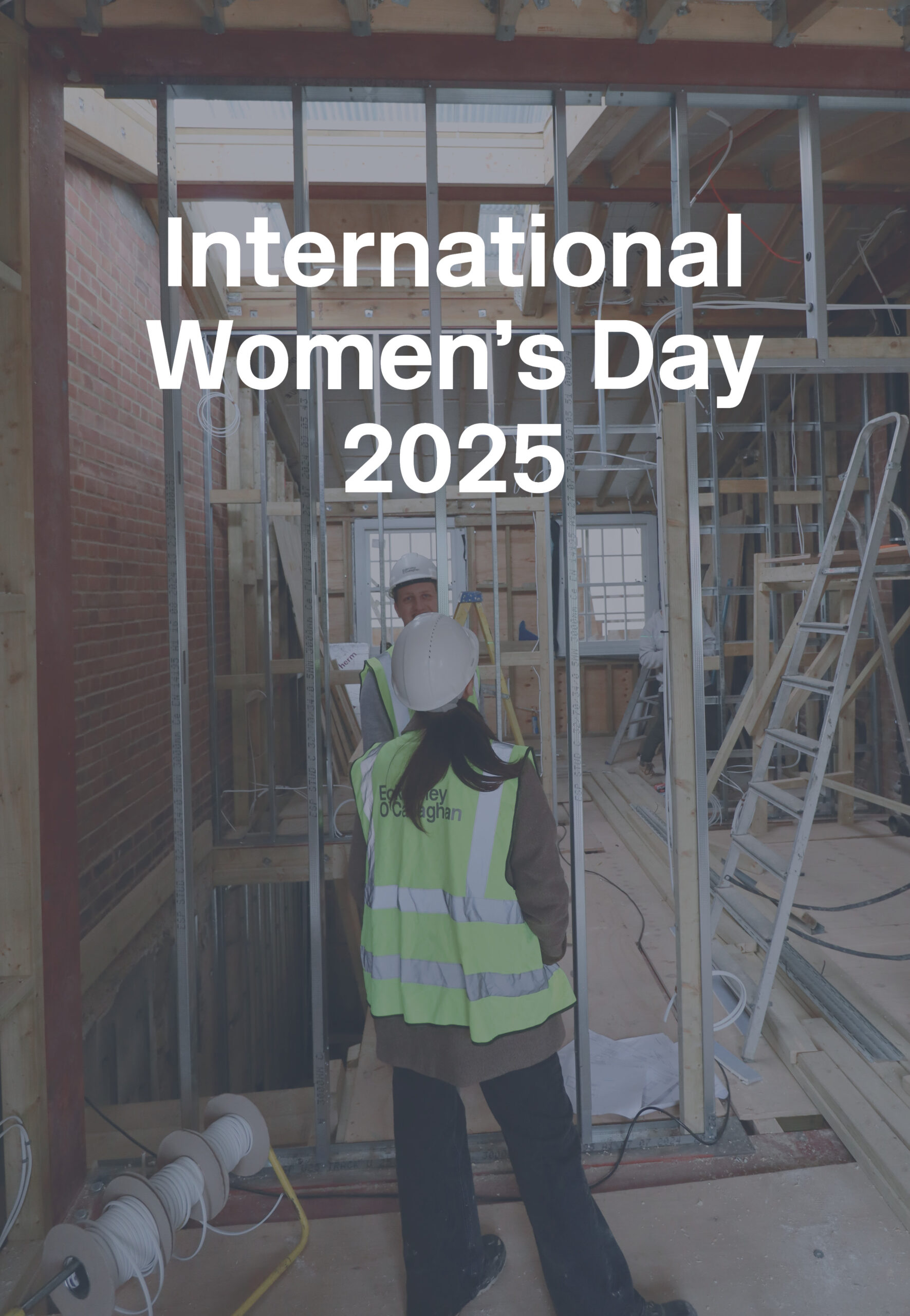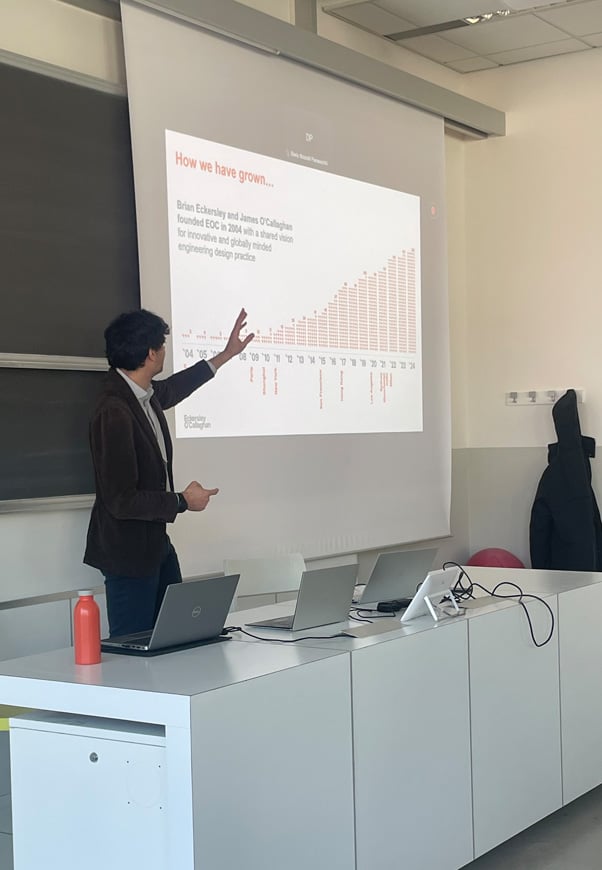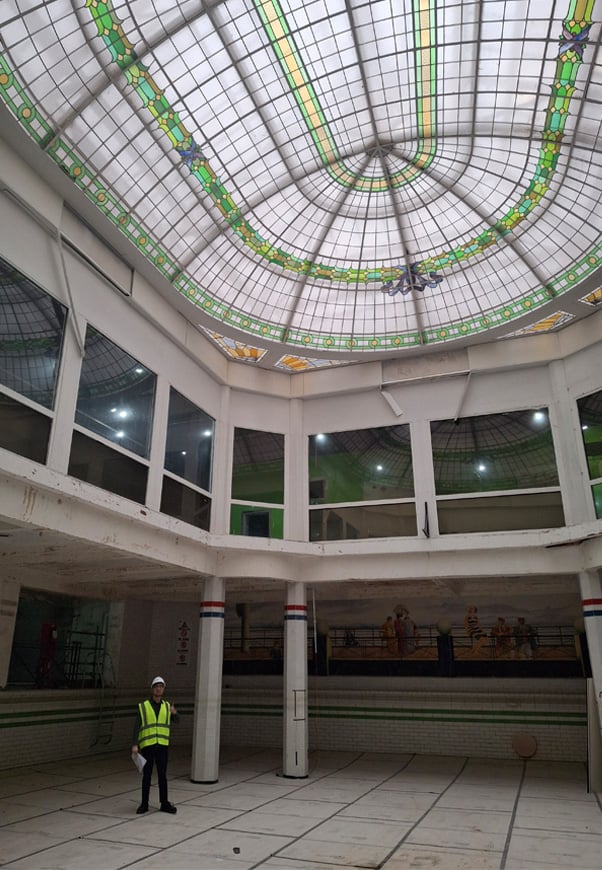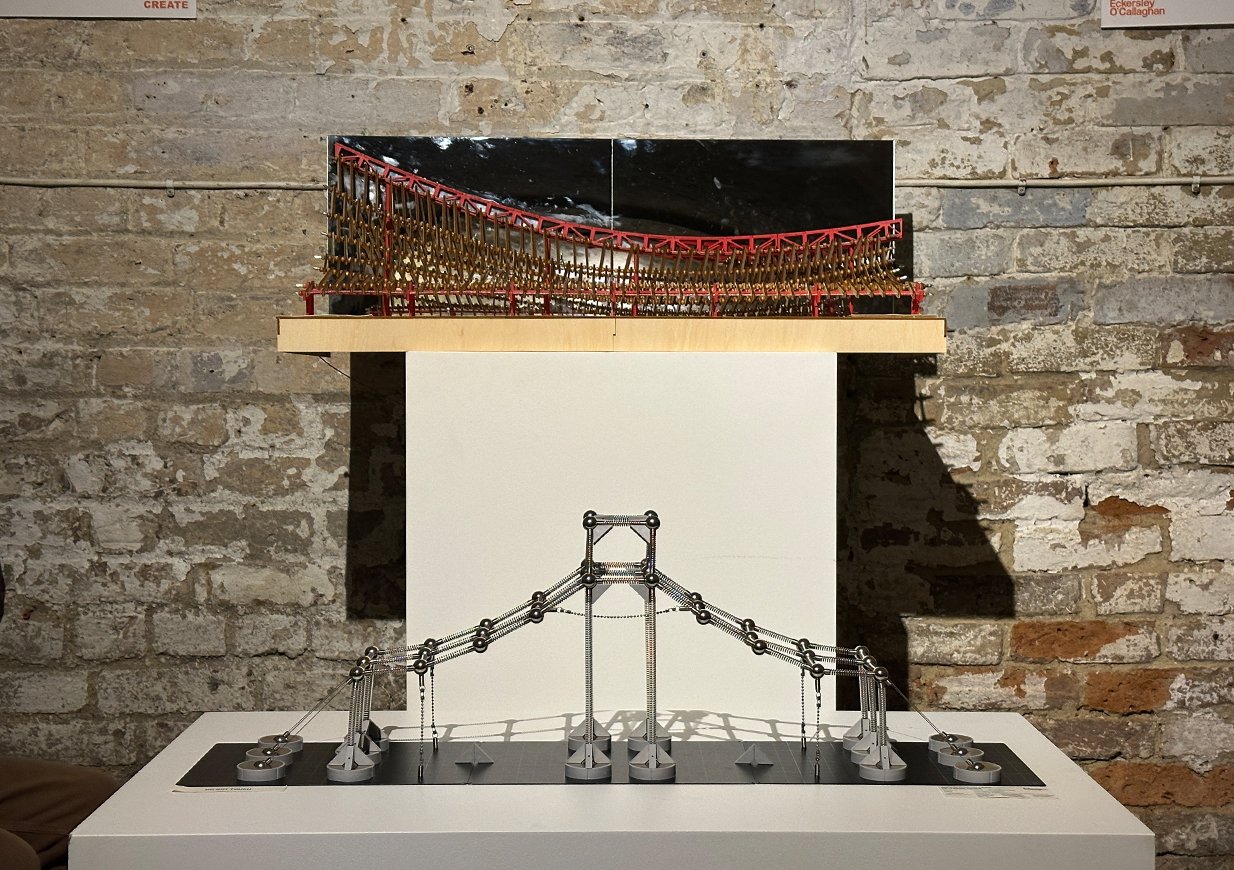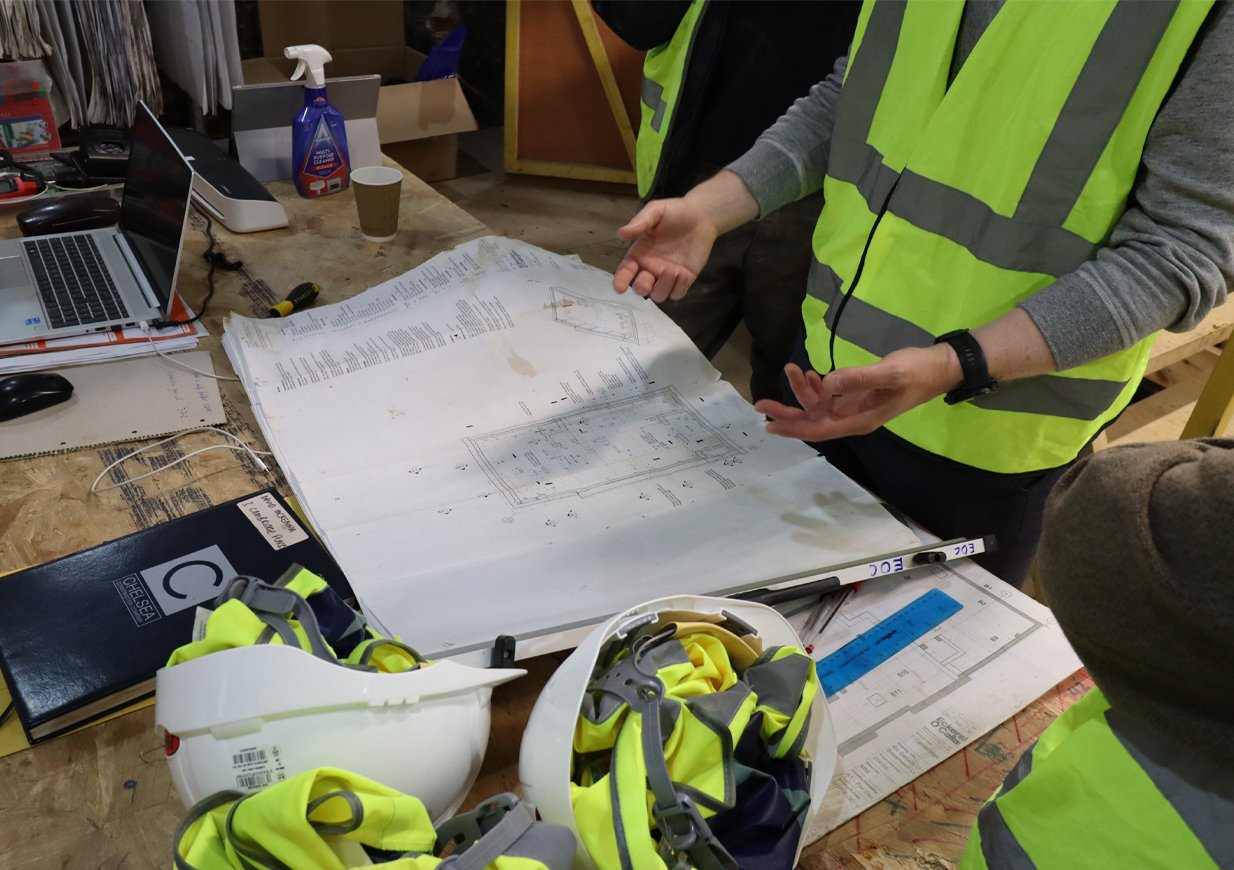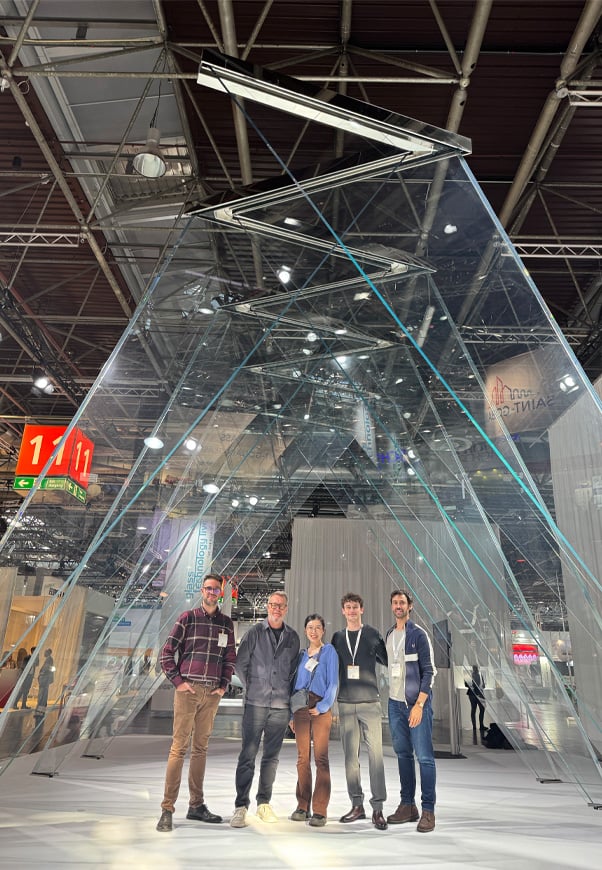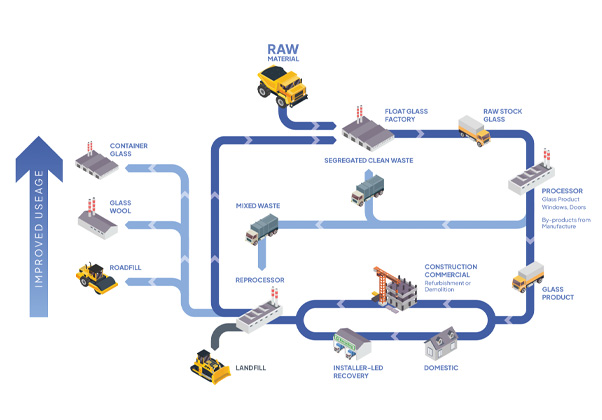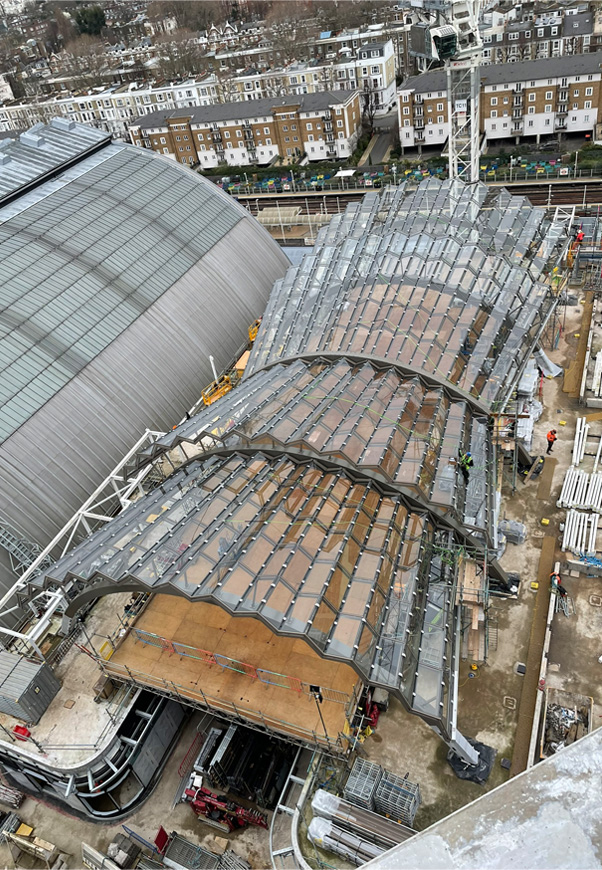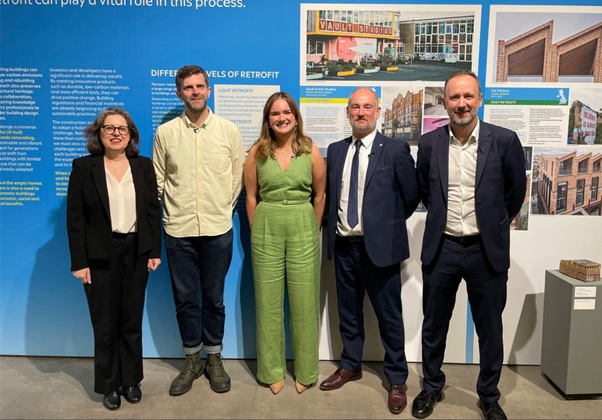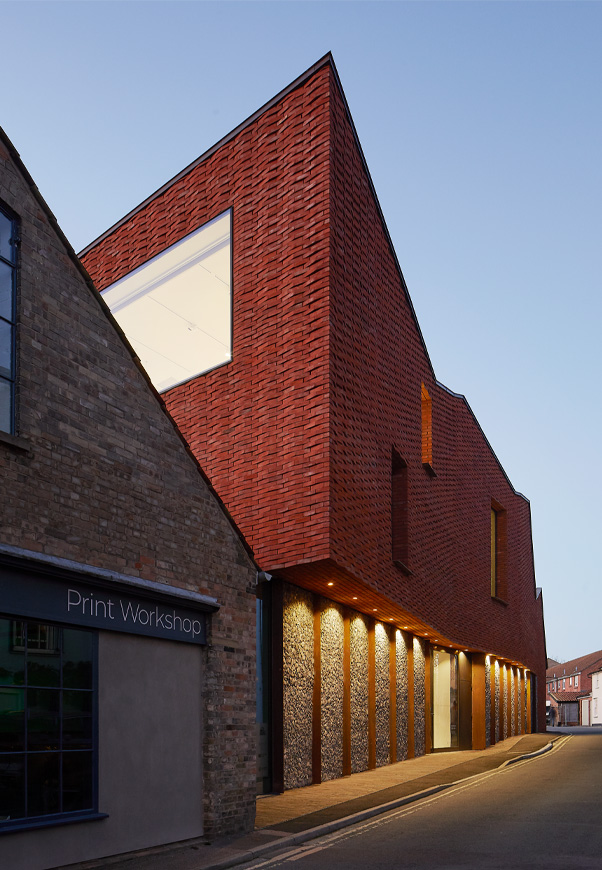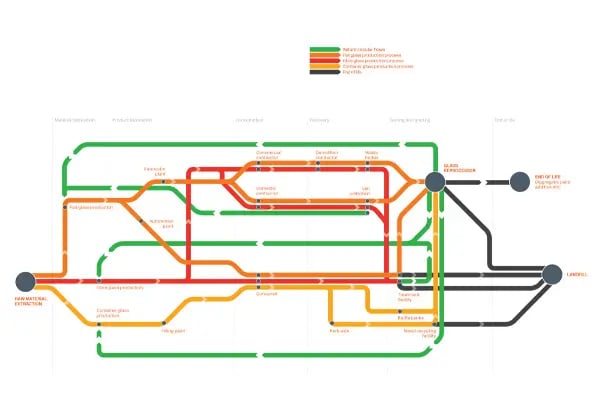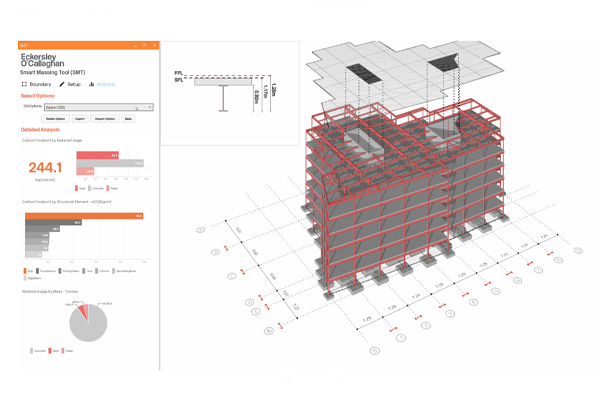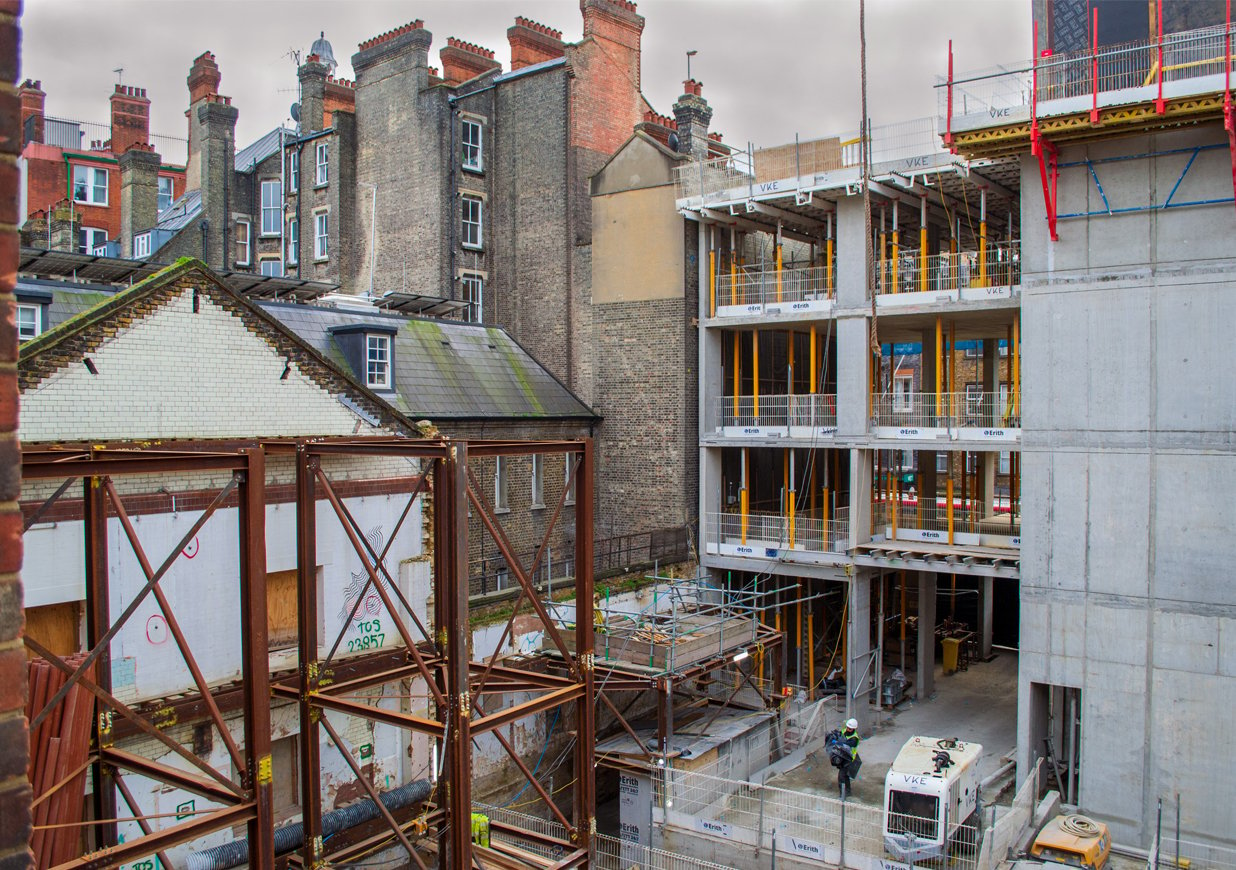Digital Design | Smart Massing Tool
18 January 2024
As part of our Digital Design toolkit, we are pleased to unveil the first internal release of the Smart Massing Tool (SMT), a parametric structural engineering and embodied carbon performance analysis tool. SMT empowers designers to explore various structural typologies and material options rapidly and precisely, comparing geometrical aspects such as structural sizing (grids and elements), embodied carbon estimates, and other important metrics, enabling better decision-making during the early stages of design development.
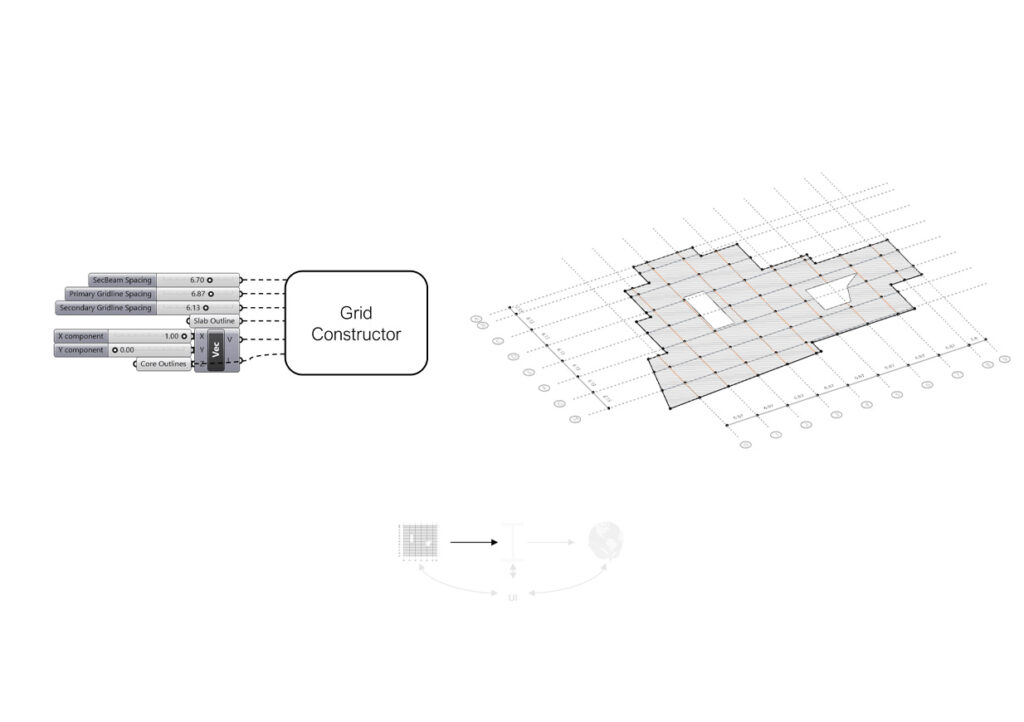
Figure 1: SMT Alpha – Structural Grid
The tool’s key strength lies in offering a quick generation of a parametric 3D model for the building frame, visualising and manipulating parameters such as structural grid spacing, cross-section sizing, loading conditions, and materials, facilitating iteration and optioneering comparison. Furthermore, SMT is backed up by EOC’s in-depth knowledge of sustainable structural aspects, such as embodied carbon in structural engineering, and our internal database of typical structural details. Finally, the tool is interlinked with EOC’s materials database and suppliers, allowing the adoption of the latest industry trends and developments even at early stages.
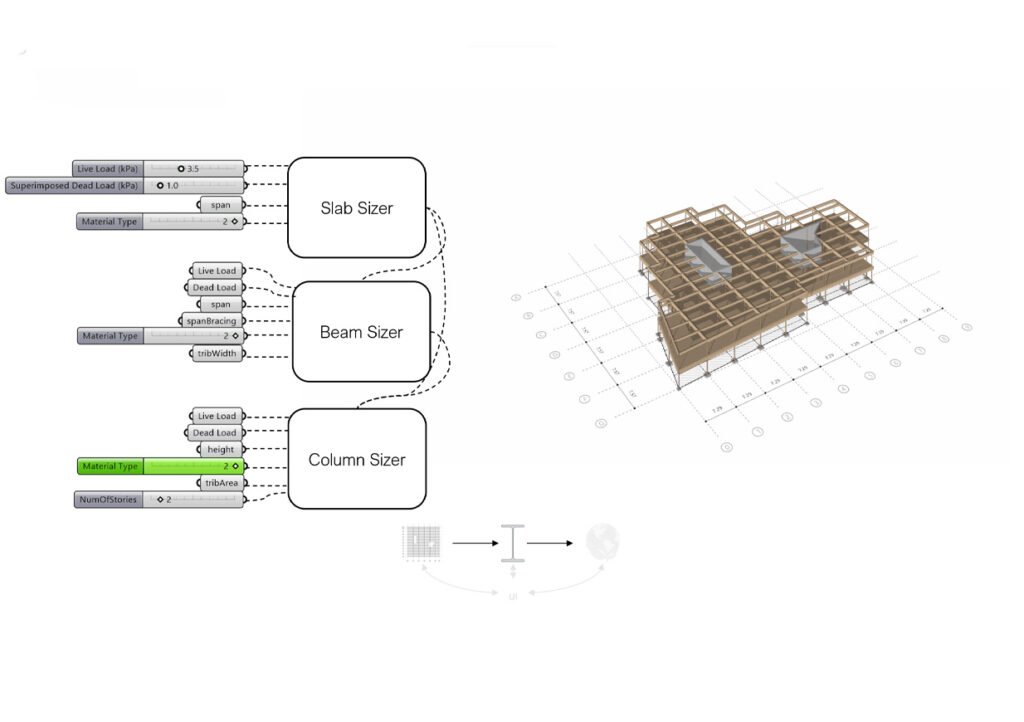
Figure 2: SMT Alpha – Structural Sizing
The Smart Massing Tool (SMT) originated from three core ideas: firstly, the goal was to enable the exploration of diverse structural topologies while swiftly assessing changes in embodied carbon; secondly, the tool needed to easily adapt to reflect industry innovations; and thirdly, it aimed to adhere to the architect’s geometric rules rather than limiting designs to rectilinear floor plates. In our Grasshopper plugin development, emphasis was placed on grid construction components tailored for unique floorplates and parametric beam spacing. Additionally, we developed auto-sizing element components that allow users to input custom materials, cross-sections, and embodied carbon data. As for user interaction, the interface was designed to be clear and concise, allowing users to easily modify inputs, and quickly receive an output of crucial embodied carbon metrics. Although initially developed for early-stage analysis, Rhino. Inside workflows now enable the importation of SMT structures into Revit and external finite element software, enhancing design development and collaboration even in the early stages of the design process.
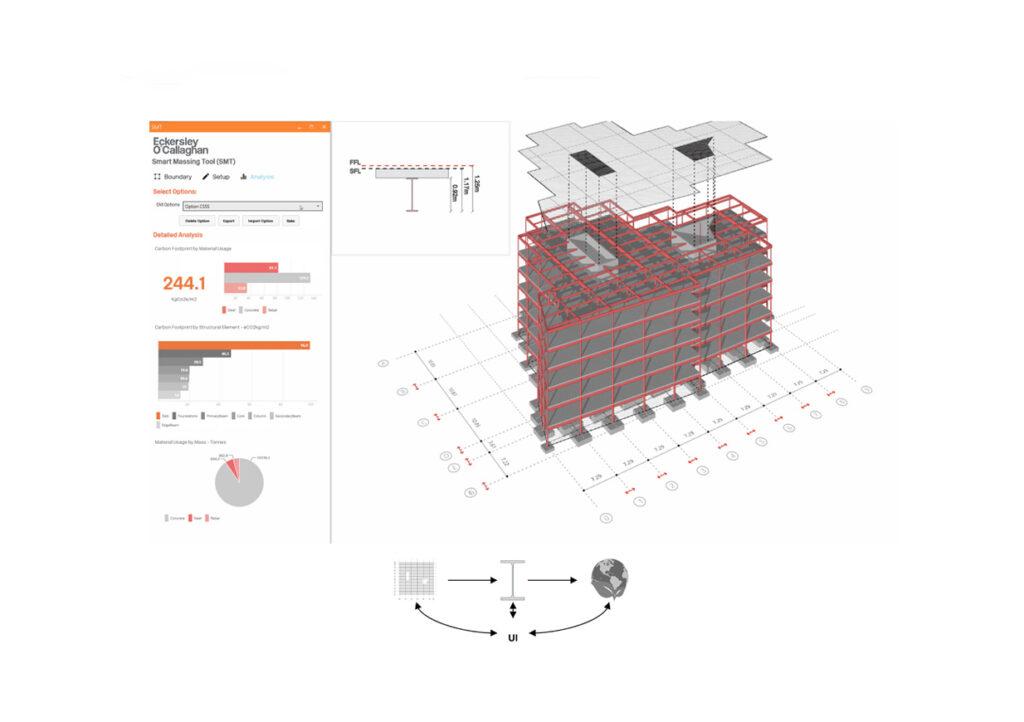
Figure 3: SMT Alpha – Embodied Carbon and User Interface (UI)
SMT integrates parametric design and EOC’s structural engineering expertise, and with its simple user interface, emerges as a crucial solution for our designers to support clients in achieving sustainable structures from the outset. Coupled with the well-celebrated EOC CO2 for Revit, a tool suitable for mid to later design stages, SMT for Rhino and Grasshopper has a pivotal impact, completing a standard becoming workflow when it comes to designing and monitoring embodied carbon consumption throughout structural design evolution.

